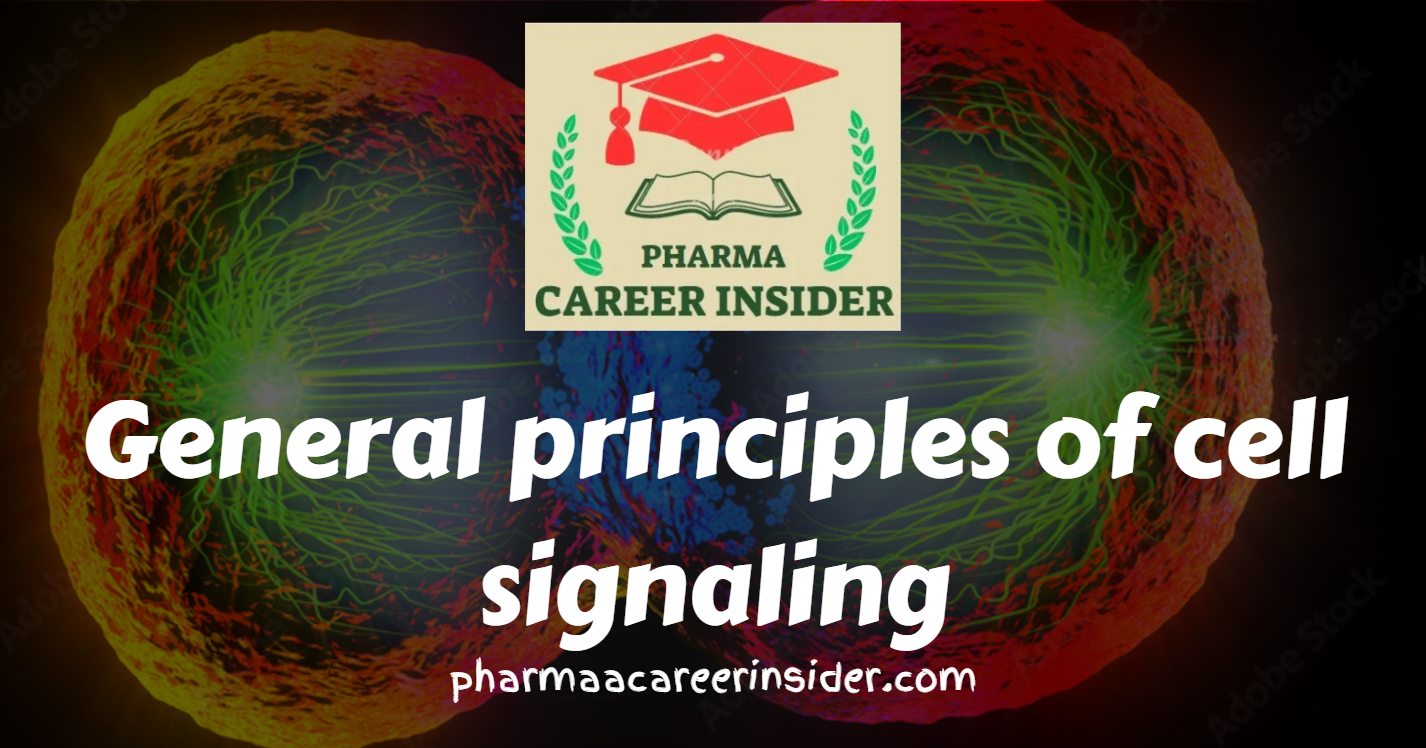Cell communication, also known as cell signaling, is the process by which cells communicate with each other to coordinate various physiological and biochemical processes within an organism. It is a fundamental aspect of multicellular life and plays a critical role in regulating growth, development, immune responses, and homeostasis. The general principles of cell communication involve a series of steps and mechanisms that allow cells to transmit and receive signals effectively. Here are the key principles of cell communication:
1. Signal Generation:
Cell communication begins with the generation of a signaling molecule or ligand by one cell. These signaling molecules can be small (e.g., hormones), proteins (e.g., growth factors), or even electrical impulses (e.g., in nerve cells).
2. Signal Reception:
The target cell receives the signaling molecule by binding it to specific receptor proteins on its surface or within the cell. These receptors are highly specific, recognizing and binding only to the appropriate ligand.
3. Signal Transduction:
After binding the ligand to the receptor, a series of intracellular events, known as signal transduction, is initiated. This often involves a cascade of biochemical reactions, including activating enzymes, protein kinases, and second messengers.
4. Amplification of the Signal:
Signal transduction pathways frequently involve signal amplification. A single ligand-receptor binding event can activate multiple molecules in the pathway, leading to a significant amplification of the signal’s strength.
5. Cellular Response:
The signal transduction pathway ultimately leads to a cellular response. This response can take various forms, depending on the nature of the signal and the specific cell type. Responses may include changes in gene expression, altered metabolic activity, cell division, or membrane potential, among others.
6. Signal Termination:
To prevent prolonged activation of the response, mechanisms exist to terminate the signal. Ligand-receptor complexes can be internalized, broken down, or recycled, and signal transduction pathways can be deactivated through negative feedback mechanisms.
7. Specificity and Selectivity:
Cell signaling is highly specific and selective. Each ligand interacts only with its corresponding receptor, ensuring that the correct cells receive and respond to the appropriate signals.
8. Integration of Signals:
Cells can receive and integrate multiple signals simultaneously. The combination and timing of signals received by a cell can influence its response, allowing for complex and coordinated cellular activities.
9. Autocrine, Paracrine, and Endocrine Signaling:
Cells can communicate through different signaling modes:
Autocrine Signaling: Cells release signaling molecules that bind to receptors on their own surface, influencing their own behavior.
Paracrine Signaling: Cells release signaling molecules that affect neighboring cells within a short range.
Endocrine Signaling: Hormones are released into the bloodstream and can travel long distances to affect target cells throughout the body.
10. Cross-talk and Redundancy:
Multiple signaling pathways can intersect and interact, allowing for complex regulatory networks within cells. Redundancy in signaling pathways ensures robustness and reliability in cellular responses.
11. Diseases and Aberrant Signaling:
Dysregulation of cell communication can lead to various diseases. For example, cancer often results from mutations that disrupt normal signaling pathways, leading to uncontrolled cell growth.
Cell communication is a highly dynamic and tightly regulated process that ensures the proper functioning and coordination of cells within an organism. It is essential for maintaining homeostasis, responding to environmental changes, and enabling complex physiological processes in multicellular organisms. Understanding the general principles of cell communication is critical for both basic research and the development of therapeutic strategies for various diseases.

